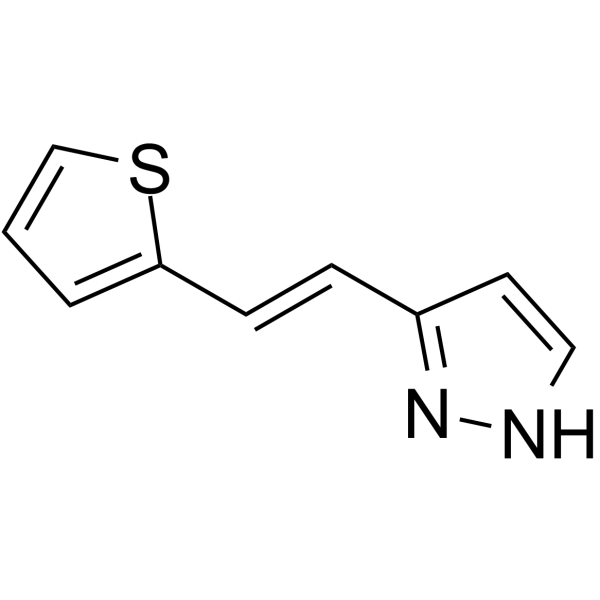| Description |
Terevalefim (ANG-3777), an hepatocyte growth factor (HGF) mimetic, selectively activates the c-Met receptor[1][2].
|
| Related Catalog |
|
| In Vitro |
Terevalefim (ANG-3777) (0-10 μM) significantly inhibited cancer cells proliferation in HUVECs[2]. Cell Viability Assay[2] Cell Line: Human Umbilical Vein Epithelial Cells (HUVECs). Concentration: 0.44, 1.78, and 7.1 μM. Incubation Time: 24 to 48 hours. Result: Dose-dependently inhibited cell proliferation.
|
| In Vivo |
Terevalefim (ANG-3777) decreases apoptosis, increases proliferation, and promotes organ repair and function in animal models[1]. Terevalefim (ANG-3777, 40 mg/kg, IP) phosphorylates the c-Met receptor in rats[2]. Animal Model: SD rats[2]. Dosage: 40 mg/kg. Administration: IP injection, once. Result: Selectively phosphorylated the c-Met receptor and not other growth factor receptors.
|
| References |
[1]. Jonathan S Bromberg, et al. Renal Function Improvement Following ANG-3777 Treatment in Patients at High Risk for Delayed Graft Function After Kidney Transplantation. Transplantation. 2021 Feb 1;105(2):443-450. [2]. Latha Paka, et al. The Effect of ANG-3777 on Hepatocyte Growth Factor Receptor, c-MET Signaling. American Transplant Society.
|
